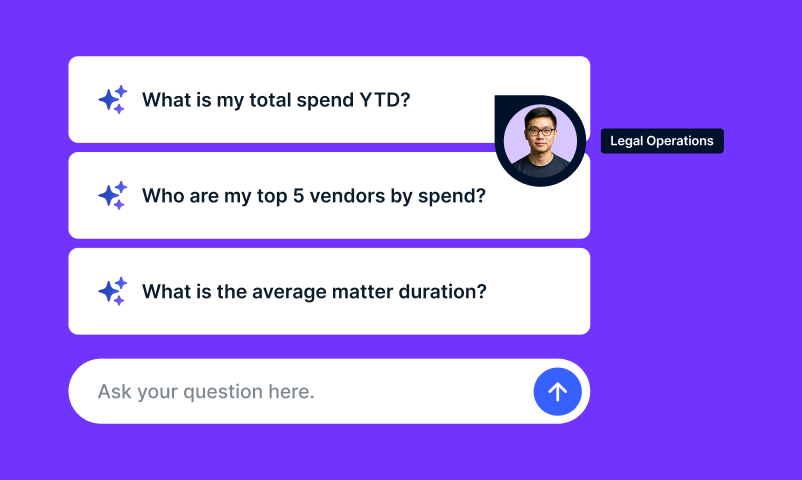Many law firms of all sizes are now generating their legal bills in electronic format, submitting them through a legal spend management system with an e-billing function to the client. This is known as “true” e-billing, as opposed to a law firm simply keying the billing data into a web portal and/or uploading a PDF copy of the bill. For those firms using full e-billing, metrics can monitor how well the function performs.
Law firms have implemented e-billing in different ways, and there is no ideal method – the approach taken will often depend on the firm’s culture, its preferred organization and structure, technical considerations, available resources, and even which clients are asking for their bills to be delivered this way. However, it is essential for law firms to know how efficient and effective their processes and procedures are for dealing with this critical business area. Inefficient processes will lead to a backlog of bills waiting to go to the client, rejected and repeatedly rectified, delays at various stages, and ultimately an impact on cash flow – all of which leads to unhappy clients and partners.
The Aspects of E-Billing That Every Law Firm Should Measure:
Who needs to know how well the e-billing function is performing? Who are the interested parties? Usually, there is no “owner” of e-billing in a law firm, and many business areas will be interested. The e-billing stakeholders include the firm’s lawyers, the relationship partner, revenue controllers, finance staff, the e-billing team, the finance systems team, matter managers, and the business development team will all have an interest – and often from a different perspective.
The key objective is to understand the e-billing function, its areas for improvement, and how these improvements will add value to the law firm.
To address this objective, consider these four questions:
- What do we want to monitor, and why is it important?
- What information do we have that will allow us to make the measurements?
- How should we record the metrics and KPIs (Key Performance Indicators) and present results to the relevant people?
- Over what period can we take the measurements to allow for like-for-like comparisons?
Support the Law Firms E-Billing Function
The following section will explain how to develop reports and associated monitoring tools to support the e-billing function and provide helpful information to the stakeholders.
E-BILLING TRACKING APPLICATIONS FOR LAW FIRMS
Many law firms have developed an e-Bill “tracking” application for internal use, which can provide status reports on e-Bills processed and other key information items. The tracking application, which can be spreadsheet based, will provide high visibility of e-Bills processed and analyze bills rejected, the reasons, the fixes required, and who is responsible. The person responsible (usually the e-billing coordinator) should update the tracker in as close to real-time as possible.
This “tracker” tool can pair with the invoice return form to provide essential and structured information to stakeholders. It gives revenue/finance staff, lawyers, and the e-billing team visibility on the status of e-Bills as they progress through the various business units and into the legal spend management system of the client. Used correctly, the tool will formalize the feedback process and help teams to manage their workloads. It will also help prioritize e-billing requests and protect the e-billing team from responding to “the last and loudest” user request.
REPORTING ON E-BILL REJECTIONS
At the basic level, lawyers need to know if a particular e-Bill is successfully uploaded and approved for payment by the client. If rejected, they will also need to know the reason and who is responsible for the amendment(s) required. For example, is it a legal issue that needs expert knowledge, or can the e-billing team resolve it? Address this by having a formal online “invoice return” form that e-Bill uploaders can use to notify the relevant function of rejected invoices and the expected resolution. A law firm can use this form to formally record rejected e-Bills, where they are sent for resolution and the outcome, rather than rely on phone calls, e-mails, etc. It will also produce further reporting statistics on e-billing performance.
It is vital that the e-billing team fully understand the statistics available from the e-Bill validation process and uses them, in conjunction with the business, to drive continual improvement of e-billing and related data quality and accuracy.
One of the critical indicators of the effectiveness of the e-billing function is the reduction in the number of e-Bills rejected by the client’s legal spend management system over a given time (ideally, this will be trending toward zero over time). For example, the solution is able to record for a given batch of bills (say weekly by client) how many e-Bills were loaded, and of those, the percent that:
- passed validation at the first attempt,
- needing timekeeper data,
- needing charge-out rates,
- with missing task/activity codes,
- without narratives,
- for other errors,
- returned for “legal” reasons,
- for suspected block billing.
The aim is to reduce the percentage of e-Bills failing validation at each stage and to measure the improvement over time by examining and acting on the root causes of rejections.
FURTHER METRICS AND KPIS THAT SUPPORT THE E-BILLING FUNCTION
A reasonably simple indicator to measure effectiveness would be “Bills received by the e-billing team this week” (value and number) and “Bills uploaded to legal spend management software.”
However, it is more beneficial to take this analysis further and provide a detailed breakdown of the e-billing process. For example, every month, a report can show the number of e-Bills received by the e-billing team with their monetary value and the percentage of the total e-Bills for some (or all) of these categories:
- Bills uploaded to the legal spend management software
- Bills rejected/returned for correction or amendment
- Bills with errors on first and subsequent submissions
- Bills awaiting amendment by the legal teams
- Bills with the client for authorization
- Bills authorized for payment
Other reporting metrics can focus on critical highlights (e.g., Five new clients expected to go live this month), named clients (e.g., Why does client XYZ have a high percentage of bills awaiting authorization?), and action points for the week (e.g., Focus on missing time narratives with this particular legal team).
There is no correct way to display or represent some (or all) of these metrics and KPIs. Much will depend on the audience and the level of detail required. Generally, senior management will only need a summary of the data and/or problem areas highlighted. By contrast, the e-billing/revenue/legal teams will need more detailed information to better manage their workload. Consider the use of graphics and a dashboard. This makes consuming and understanding the data easier, especially when identifying trends and changes over time.
How to Set Goals/Targets for E-Billing and Related Functions
Like all business units, the e-billing function should have goals set to assist them in improving their service levels. Some of these targets are not the sole responsibility of the e-billing team and will require input and cooperation from the revenue and legal teams. The law firm management must support this and ensure that other business units comply with the objectives.
However, some helpful performance/operational targets to consider are:
- “Add new clients for e-billing in xx days if that client’s preferred LEDES format is already in use.”
- “Reduce rejected invoices and write-offs by xx % over the next month.”
- “Monitor and reduce how many e-Bills do not have the required mandatory fields present before uploading them to the legal spend management system.”
- “Reduce days taken from bill generation to loading into the client’s e-billing software”
- “Reduce times e-Bill is rejected after being loaded to the bill acceptance by the vendor.”
- “Monitor and reduce how long it takes to rectify rejected e-Bills if the e-billing team can make the corrections.”
- “Monitor and reduce how long it takes to rectify rejected e-Bills if other business units have to make the corrections.”
Of course, the reporting statistics mentioned earlier can also be used as key metrics to monitor the service’s effectiveness.
THE USE OF INTERNAL AUDIT REPORTS
While this article has looked at KPI-led reports that will measure the effectiveness of the firm’s e-billing service, other types of reports will assist the teams in minimizing errors on e-Bills in the first place. For example, the firm’s e-billing team can run audit reports on a client-by-client basis to check that the expected data is present before billing the matter. There should be processes to refer many of these issues back to the business to resolve. Another report that could be invaluable is for all new matters that require notification of e-billing to the legal and e-billing teams. This will help ensure that there are “no surprises” at bill generation time and that all parties know that an e-Bill is required. Ideally, the new matter “take-on” team will be able to produce such a report.
Poor performance on KPIs could be the catalyst for implementing such processes, but it is best practice to do these reports, as it will deliver a better client experience.
Request a demo of eBilling.space today.






